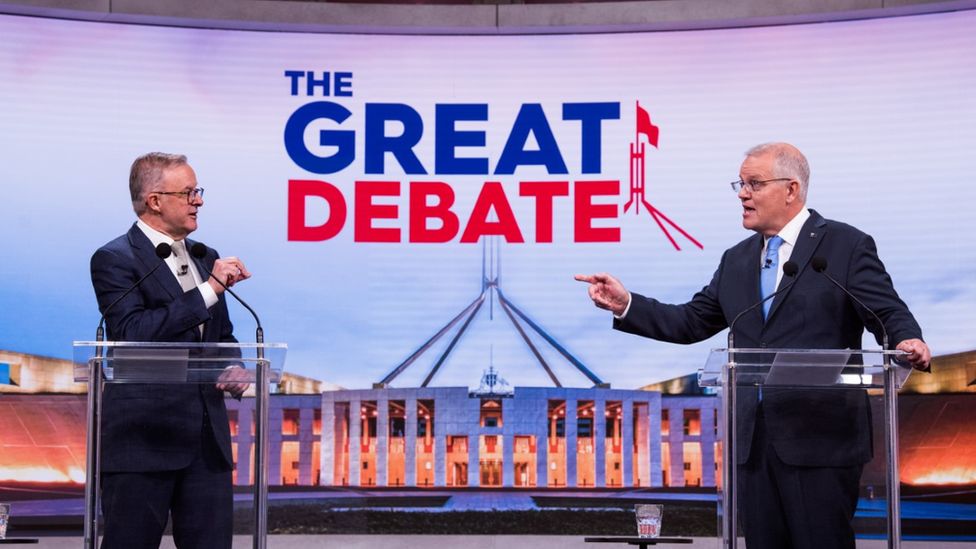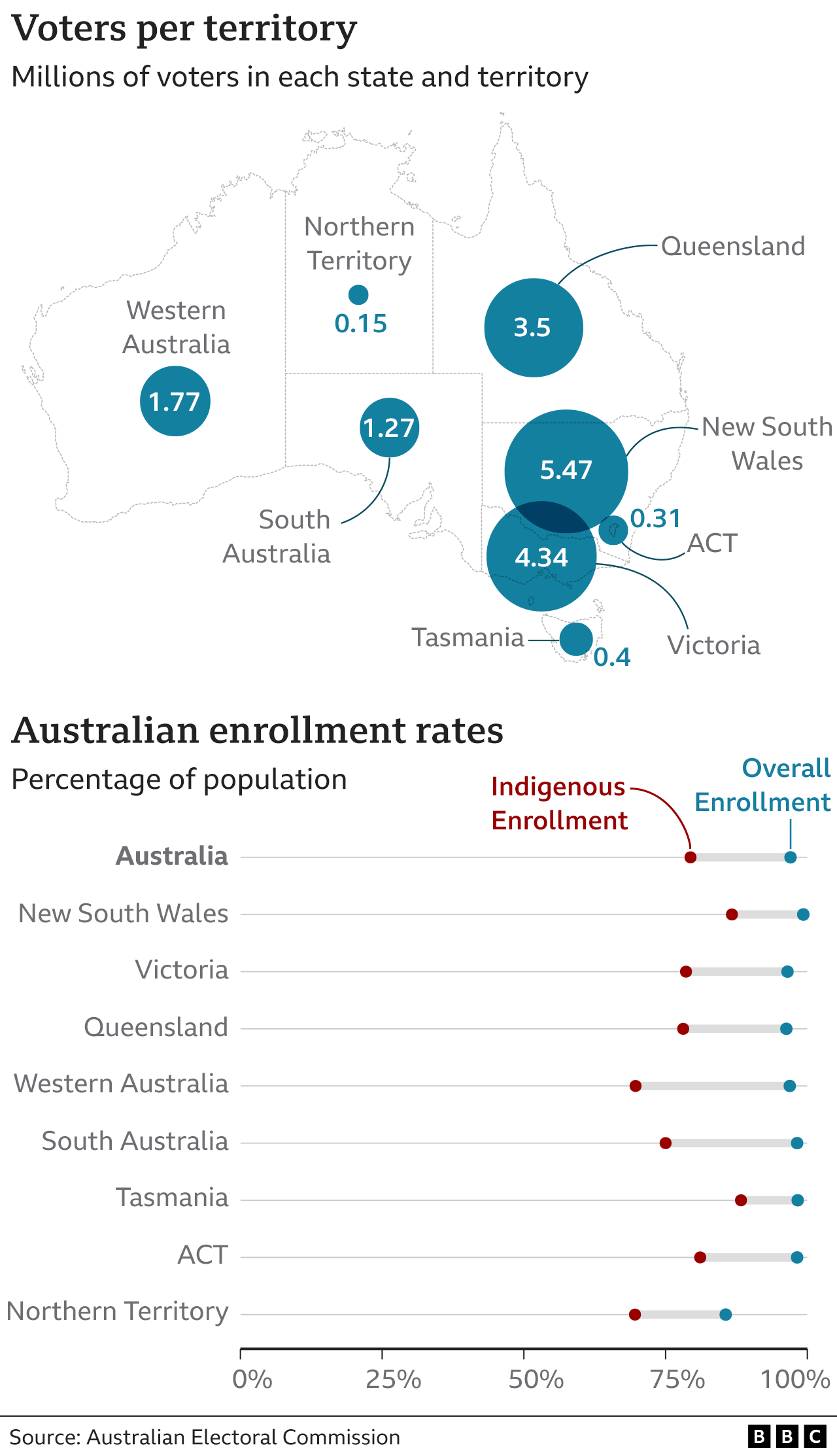A GUIDE TO AUSTRALIA’S 2022 ELECTION

BBC: 18 May 2022
Australians go to the polls on 21 May, for the country’s first election since 2019.
It will decide who serves as Australia’s next prime minister and which political group is in power.
Who is being elected?
Australians will vote for all the seats in the House of Representatives, and just over half the seats in the Senate.
The result in the House of Representatives – where the prime minister sits – will decide which party forms the next government.
One party needs to win at least 76 of the 151 seats there to form a majority government.
If it cannot do that, it must try to win support from independent MPs, or those from minor parties.
Voting is mandatory for over-18s. More than 17.2 million people – 96% of eligible voters – are enrolled for the 2022 election.
Australia does not have a set date for national elections, but the maximum term for the House of Representatives is three years.
Who is currently in power?
The Liberal-National Coalition holds 76 seats in the House of Representatives, which makes it the ruling political group.
Labor holds 68, and the seven other seats are held by minor parties and independents.
In the Senate, the upper house of Parliament, the Coalition has 35 seats and Labor has 26. Forty Senate seats are up for election.

Who is in the running to be prime minister?
Scott Morrison has been the prime minister since 2018, having taken over from Malcolm Turnbull.
He has been taking credit for adopting a tough closed-borders approach to Covid, which helped Australia achieve one of the lowest death rates globally.
But the prime minister is facing public perception problems, after criticisms of his character from senior members of his own party and others.
Government senator Concetta Fierravanti-Wells accused him of being “an autocrat” and “a bully with no moral compass” during a row over internal party processes.
Deputy Prime Minister Barnaby Joyce wrote that Mr Morrison was a “hypocrite and a liar” in a text message before he took the post.
Mr Morrison is being challenged by Labor leader Anthony Albanese.
Mr Albanese is one of Australia’s longest-serving politicians and was briefly deputy prime minister under Kevin Rudd in 2013.
Mr Albanese has recently edged from the political left to the centre, and is basing his campaign on “small targets” – modest policy proposals.
What are the key issues?
Australia’s economy grew strongly throughout the pandemic, and is projected to grow a further 4.25% this year.
The unemployment rate has fallen to 4% – its lowest level since 2008.
However, many people are concerned about the rising costs of fuel, electricity and other goods.
Added to this, Australia has just raised interest rates for the first time in a decade – putting pressure on borrowers and those with mortgages.
Climate change is an increasing worry because Australia has recently seen some its its worst ever bushfires and floods.
Both major parties have committed to net zero emissions by 2050. However, both of them have also pledged support to Australia’s coal mining industry.
This may push environmentally aware voters towards parties such as the Greens.
Last year, hundreds of thousands of Australians took part in protests over the treatment of women.
A recent review has suggested that one in three staff working in parliamentary offices have experienced sexual harassment.
Mr Morrison made a formal apology on behalf of the parliament, but his party has been criticised for its response to misconduct allegations.
Labor says it wants to reduce the “boys’ club” culture of parliament, but the party has also faced accusations of bullying.
China recently signed a security pact with the Solomon Islands, a nation 2,000km (1,400 miles) north-east of Australia.
Labor has accused Mr Morrison of letting China potentially expand its military presence in the region, saying this was “worst failure of Australian foreign policy in the Pacific” in 80 years.
The prime minister has defended Australia’s ties with its “Pacific family”.
When will we know the results?
Most likely late on election day, but it might take longer if the contest is close.
If a major party has to form a pact with minor parties or independent MPs, then the negotiations could take several days. In 2010, it took Julia Gillard two weeks to receive support to put Labor in power.
Opinion polls suggest Labor will win by a narrow majority this time around. However, the polls were wildly inaccurate in the last election.



